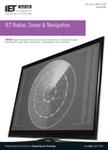版权所有:内蒙古大学图书馆 技术提供:维普资讯• 智图
内蒙古自治区呼和浩特市赛罕区大学西街235号 邮编: 010021

作者机构:Chinese Acad Sci Inst Acoust Beijing Peoples R China Chinese Acad Sci Key Lab Sci & Technol Adv Underwater Acoust Signal Beijing Peoples R China Univ Chinese Acad Sci Beijing Peoples R China
出 版 物:《IET RADAR SONAR AND NAVIGATION》 (IET Radar Sonar Navig.)
年 卷 期:2024年第18卷第5期
页 面:740-753页
核心收录:
学科分类:0810[工学-信息与通信工程] 0808[工学-电气工程] 08[工学]
基 金:Youth Innovation Promotion Association of Chinese Academy of Sciences Frontier Exploration Project Independently Deployed by Institute of Acoustics, Chinese Academy of Sciences [QYTS202105] 2021021
主 题:acoustic imaging acoustic signal processing motion compensation motion estimation synthetic aperture sonar
摘 要:Accurate and robust time delay estimation is crucial for synthetic aperture sonar (SAS) imaging. A two-step time delay estimation method based on displaced phase centre antenna (DPCA) micronavigation has been widely applied in motion estimation and compensation of SASs. However, the existing methods for time delay estimation are not sufficiently robust, which reduces the performance of SAS motion estimation. Deep learning is currently one of the cutting-edge techniques and has brought about a remarkable progress in the field of underwater acoustic signal processing. In this study, a deep learning-based time delay estimation method is introduced to SAS motion estimation and compensation. The subband processing is first applied to obtain ambiguous time delays between adjacent pings from phases of SAS echoes. Then, a lightweight neural network is utilised to construct phase unwrapping. The model of the employed neural network is trained with simulation data and applied to real SAS data. The results of time delay estimation and motion compensation demonstrate that the proposed neural network-based method has much better performance than the two-step and joint-subband methods. In this study, a subband processing and lightweight neural network-based time delay estimation method is introduced to SAS motion estimation and compensation. The results of time delay estimation and motion compensation demonstrate that the proposed method has better performance than the reference method. In addition, this study provides an example of using simulation data to train a lightweight neural network and successfully applied to real ***